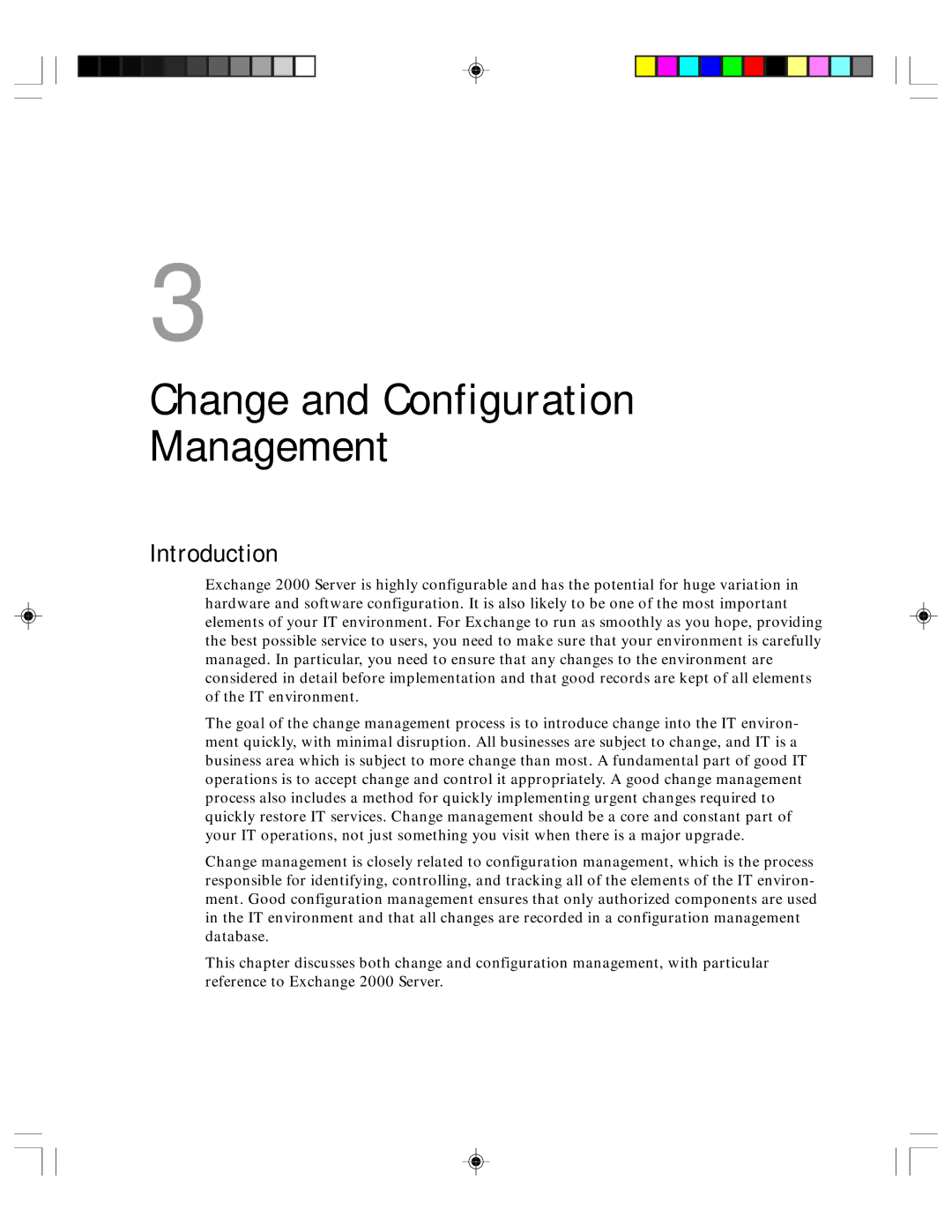
3
Change and Configuration
Management
Introduction
Exchange 2000 Server is highly configurable and has the potential for huge variation in hardware and software configuration. It is also likely to be one of the most important elements of your IT environment. For Exchange to run as smoothly as you hope, providing the best possible service to users, you need to make sure that your environment is carefully managed. In particular, you need to ensure that any changes to the environment are considered in detail before implementation and that good records are kept of all elements of the IT environment.
The goal of the change management process is to introduce change into the IT environ- ment quickly, with minimal disruption. All businesses are subject to change, and IT is a business area which is subject to more change than most. A fundamental part of good IT operations is to accept change and control it appropriately. A good change management process also includes a method for quickly implementing urgent changes required to quickly restore IT services. Change management should be a core and constant part of your IT operations, not just something you visit when there is a major upgrade.
Change management is closely related to configuration management, which is the process responsible for identifying, controlling, and tracking all of the elements of the IT environ- ment. Good configuration management ensures that only authorized components are used in the IT environment and that all changes are recorded in a configuration management database.
This chapter discusses both change and configuration management, with particular reference to Exchange 2000 Server.
